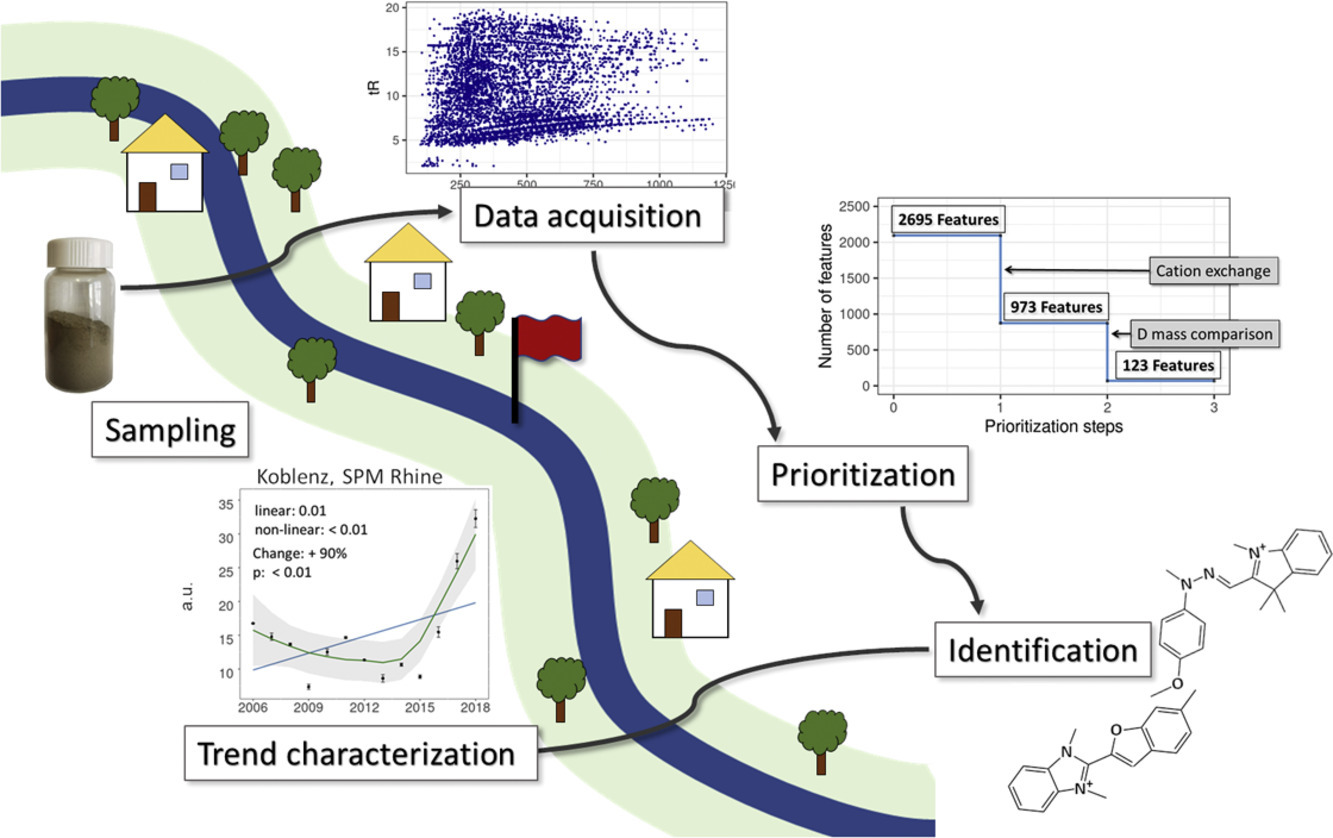Identification and trend analysis of organic cationic contaminants via non-target screening in suspended particulate matter of the German rivers Rhine and Saar
Köppe, Toni; Jewell, Kevin S.; Ehlig, Björn; Wick, Arne; Koschorreck, Jan; Ternes, Thomas A.
Water Res 229 (2023), 119304, online 28. Oktober 2022
Abstract
Non-target screening of suspended particulate matter (SPM), collected from the German rivers Rhine and Saar, was conducted with the goal of identifying organic, permanent cationic contaminants and of estimating their temporal trends over an extended period.
Therefore, annual composite samples of SPM, provided by the German Environmental Specimen Bank, were extracted and analyzed with high resolution LC-QToF-MS/MS. To facilitate the identification of substances belonging to the class “permanent cations”, prioritization methods were applied utilizing the physicochemical properties of these compounds. These methods include both interactions of the analyte molecules with cation exchange resins and analyzing mass deviations when changing from non-deuterated to deuterated mobile phase solvents during LC-MS analysis.
By applying both methods in a combined approach, 123 of the initially detected 2695 features were prioritized, corresponding to a 95% data reduction. This led to the identification of 22 permanent cationic species. The organic dyes Basic Yellow 28 and Fluorescent Brightener 363 as well as two quaternary ammonium compounds (QACs) were detected in environmental samples for the first time to best of or knowledge. The other compounds include additional QACs, as well as quaternary tri-phenylphosphonium compounds (QPC/TPP). In addition to identification, we determined temporal trends of all compounds over a period of 13 years and assessed their ecotoxicological relevance based on estimated concentrations. The two QACs oleyltrimethylammonium and eicosyltrimethylammonium show significant increasing trends in the Rhine SPM and maximum concentrations in the Saar SPM of about 900 and 1400 µg/kg, respectively. In the case of the dyes, constant trends have been observed at the end of the studied period, but also maximum concentrations of 400 µg/kg for Basic Yellow 28 in 2006 and 1000 µg/kg for Fluorescent Brightener 363 in 2015, potentially indicating a strong ecotoxicological risk.
doi: 10.1016/j.watres.2022.119304
